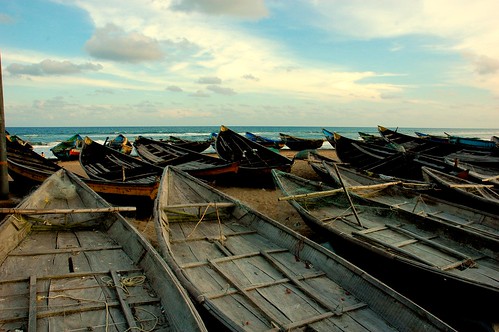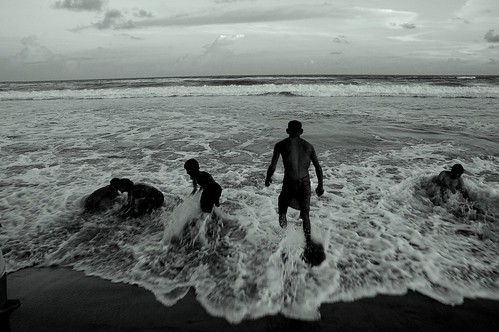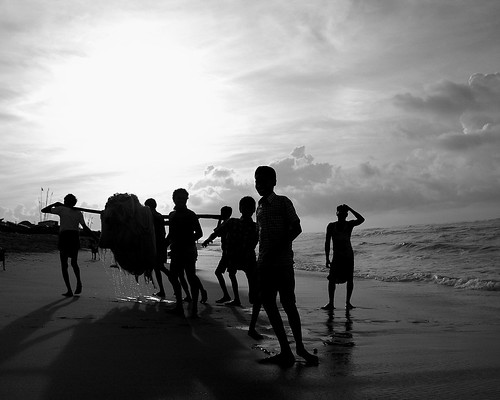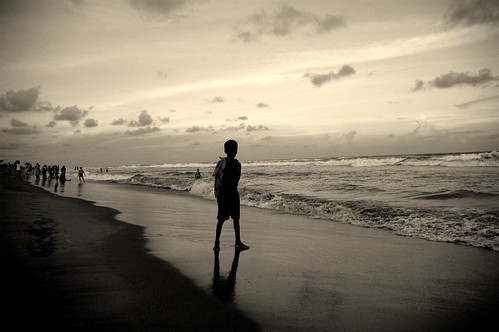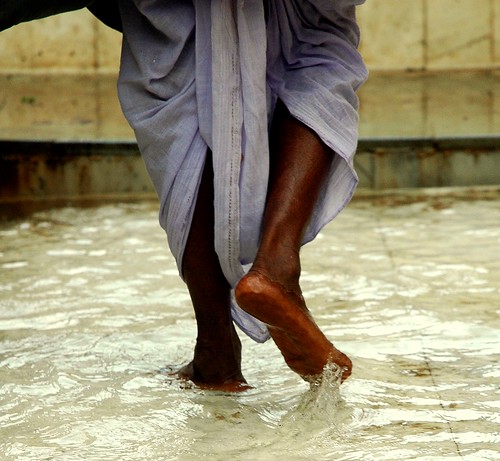
[A man washes his feet before he enters the gates of the Jagannath temple on the day of the Rath Yatra]
Peeking out from the many folds of her peacock green silk sari, Reecha Padhi tilts her head forward, closes her eyes and presses her palms together in prayer to one of the three wooden chariot shaped temples looming above her. Bright Orissan appliqué work canvas covers the great tower of the chariots. Behind her are the jostling souls of some eight hundred thousand or so pilgrims waiting to catch a glimpse of the deities in the giant chariots— Lord Jagannath, Lord Balabhadra and Devi Subhadra. This is the last day in the sanctum and tomorrow the deities will begin an 8-day journey with their many worshippers.
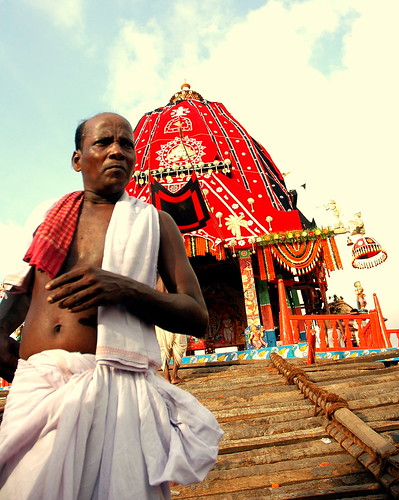
[One of the Pujakas makes final preparations on the morning of the Rath Yatra]
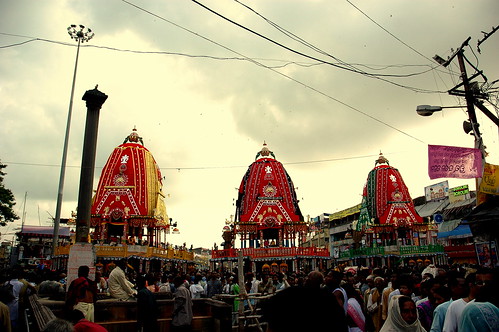
[The three raths(chariots) of - Lord Jagannath, Lord Balabhadra and Devi Subhadra]
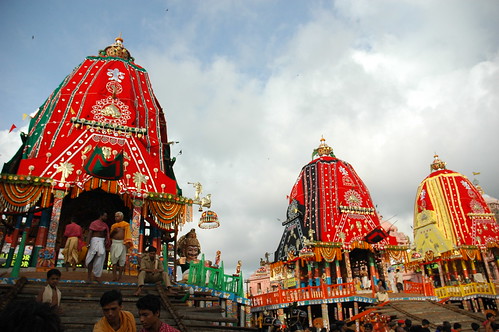
sts) shove and pull a six-foot wooden pillar painted with enormous black, lidless eyes and a red slash of a mouth, up a rough log ramp onto the chariot.Rhythmically hammering brass manjiras and dholaks, other priests swirled around the canopied chariot. A wail of ritual singing pulsed over the throng and smoke billowed from silver incense burners.
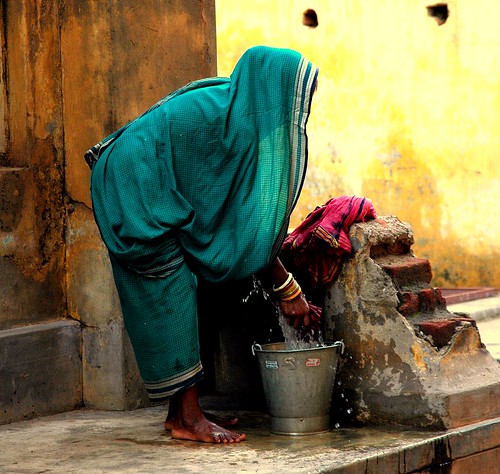
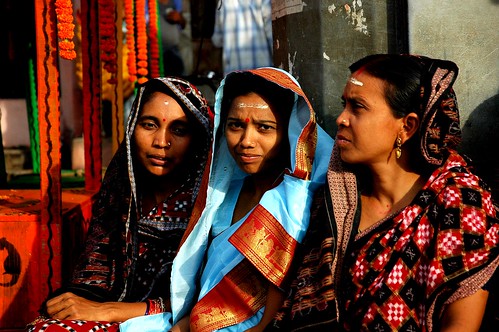
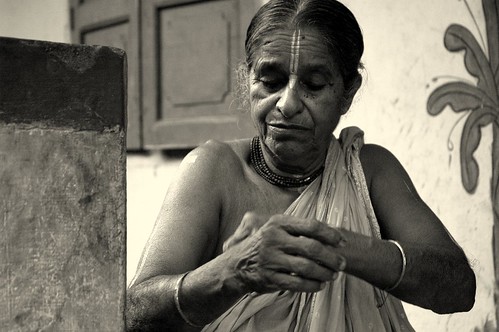
The grand spectacle of the chariot festival of the god Jagannath of Orissa has been played out on the streets of this ancient seaside town of Puri for more than six hundred years. Each summer hundreds of thousands of devotees travel here to offer darshan, a ritual gazing, before the three grand chariots, the largest bearing the
timber image of Jagannath, and to labour on the thigh-thick ropes that pull the rodigious vehicles, through the streets of Puri.
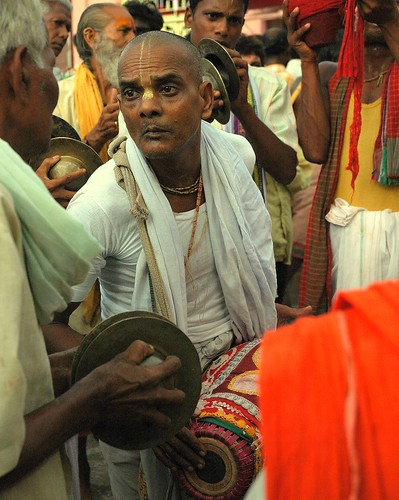
As the final stage of the annual festival began, Gajapati Maharaja of Puri,Dibyasingha Deb, came borne in a palanquin covered in red appliqué work, and ritually swept the garishly painted platforms around the three chariots with a golden broom. Gigantic ropes and wooden horses were then attached to each of the three wooden chariots. With a roar of fervor, thousands of devotees rushed to pull the carts and their god Jagannath on his summer outing.

As the great wheels slowly turned, the faithful bent low to daub their foreheads with the crushed dust left by the chariot. Slowly Jagannath and his holy siblings move forward down Puri's Grand Road towards its final destination the Shri Gundicha temple in an awe-inspiring show of faith.
